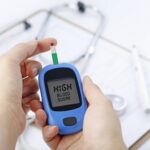Introduction:
The journey to parenthood is an exhilarating and transformative experience, often marked by the anticipation of welcoming a new life. Central to this journey is the pivotal moment of discovering whether a bundle of joy is on the way. Pregnancy testing plays a crucial role in this process, providing clarity and opening the door to a myriad of emotions. In this blog, we’ll explore the various aspects of pregnancy testing, from understanding the science behind it to navigating the emotional landscape of the results.
Understanding Pregnancy Testing:
1. How Pregnancy Tests Work:
Pregnancy tests detect the presence of human chorionic gonadotropin (hCG), a hormone produced during early pregnancy. Home pregnancy tests typically use urine samples to detect hCG levels, while blood tests conducted in healthcare settings offer a more sensitive and accurate measure.
2. When to Take a Pregnancy Test:
The timing of a pregnancy test is crucial for accurate results. Most home pregnancy tests claim to provide reliable results around the time of a missed period, which is typically two weeks after conception. However, some tests may offer accurate results even a few days before the expected period.
Types of Pregnancy Tests:
1. Home Pregnancy Tests (HPT):
-Urine Tests: These are widely available and convenient for home use, offering quick results.
-Digital Tests: These provide a digital display of results, eliminating the need for interpreting lines.
-Early Detection Tests: Designed to detect lower levels of hCG, these tests may offer accurate results earlier in the pregnancy.
2. Blood Tests:
– Quantitative hCG Blood Test: Measures the exact amount of hCG in the blood, providing information about the pregnancy’s progression.
-Qualitative hCG Blood Test: Confirms the presence of hCG, indicating whether a woman is pregnant.
Navigating the Emotional Landscape:
1. Anticipation and Anxiety:
The moment leading up to taking a pregnancy test is often filled with a mix of anticipation and anxiety. It’s essential to acknowledge and embrace these emotions as a natural part of the journey.
2. Interpreting Results:
-Positive Result: A positive result typically indicates pregnancy. However, false positives are rare but possible.
-Negative Result: A negative result may suggest that the test was taken too early or that the woman is not pregnant. It’s advisable to wait a few days and retest if the period doesn’t start.
3. Seeking Support:
Regardless of the results, the emotional impact of a pregnancy test can be significant. It’s crucial to share feelings with a partner, friend, or healthcare professional for support and guidance.
Next Steps After a Positive Result:
1. Confirmation with Healthcare Provider:
After a positive home pregnancy test, scheduling a visit to a healthcare provider is essential to confirm the pregnancy through a blood test and initiate prenatal care.
2. Embracing the Journey:
A positive pregnancy test marks the beginning of a remarkable journey. Embracing the changes, both physical and emotional, and seeking guidance from healthcare professionals ensures a healthy pregnancy.
Conclusion:
Pregnancy testing is a pivotal moment in the path to parenthood, embodying the excitement, anticipation, and sometimes, apprehension that comes with the possibility of new life. Understanding the different types of tests, interpreting results, and navigating the emotional landscape with support can contribute to a smoother and more informed journey. As individuals embark on the adventure of parenthood, the pregnancy test becomes a symbol of hope, love, and the promise of a beautiful chapter ahead.



